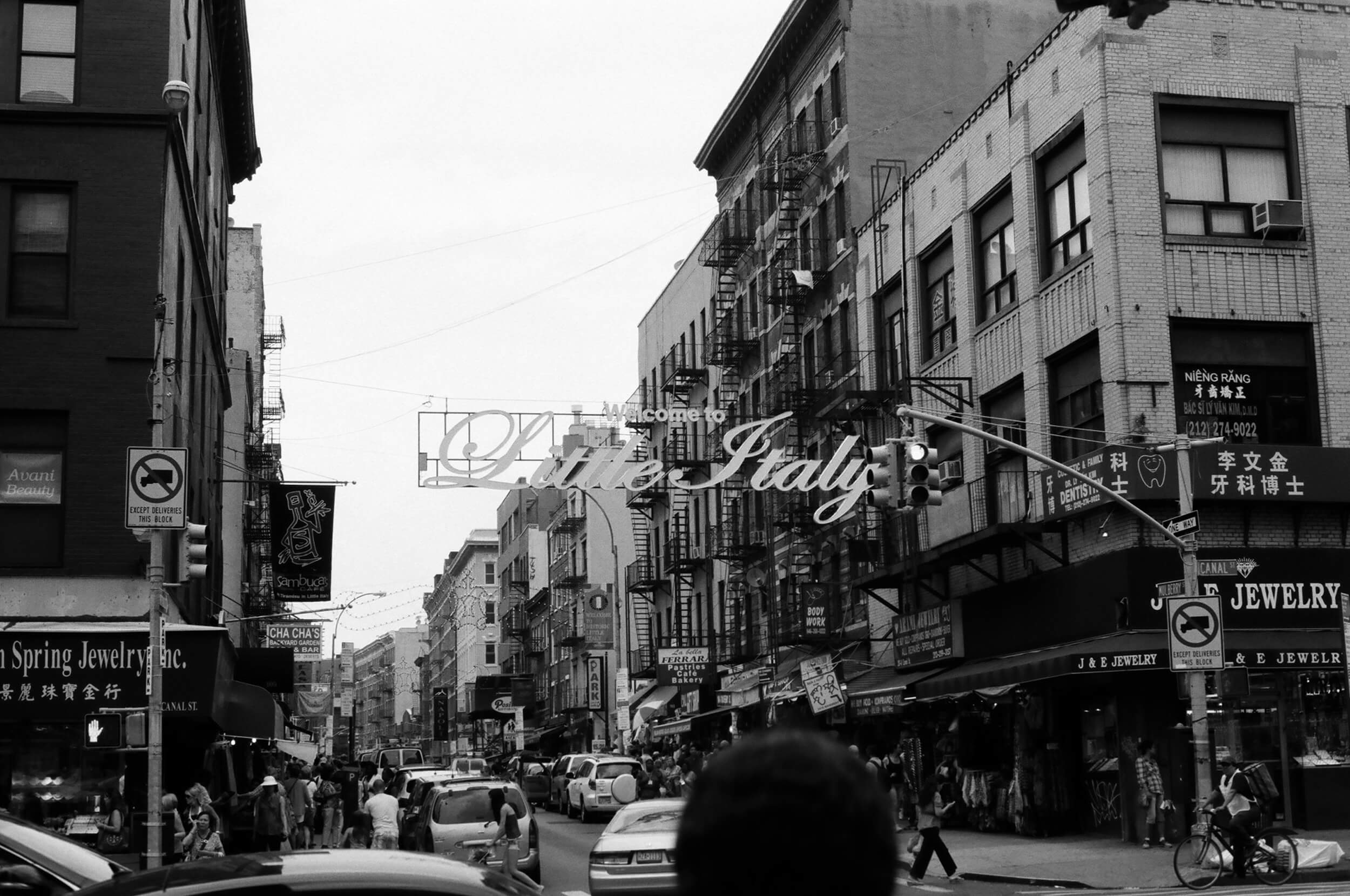
Little Italy: A Dream Fulfilled and a Neighborhood That Lives On
When I lived in Europe I had visited my relatives in Italy and Sicily and always dreamed of one day coming back to America and visiting Little Italy. For years, it had existed in my mind as a place frozen in time—Mulberry Street buzzing with some of the friendliest people on earth, red-checkered tablecloths, the smell of fresh garlic and marinara wafting from family-owned restaurants. It was the heart of Italian-American culture in New York City, and I knew one day I had to see it for myself.
That chance finally came when my daughter started working at Novella, a cozy little restaurant on the corner of Mulberry and Grand, right across from the Italian American Museum. The moment she told me, I headed to the city and finally had the opportunity to walk the streets I’d imagined for so long.
When I arrived, it felt like stepping into a postcard. The storefronts still had that old-world charm, and the people walking by spoke with a warmth that could only come from generations of tradition. I stopped by Novella first to see my daughter and grab a meal and then took in all the sites after. Fast forward to today and Novella is closed as did some of the other family-owned spots that gave Little Italy its soul. That’s the reality of the neighborhood—it’s constantly changing, adapting to the pressures of the modern city. Some of its iconic restaurants, like Angelo’s and Lombardi’s, remain, but others have been replaced by trendy boutiques or chain stores. At first, it made me sad, but then I realized something: Little Italy is more than its restaurants. It’s the spirit of the people who keep the culture alive.
And the people I speak of began with the Italian immigrants in the late 19th and early 20th centuries. At its peak, it stretched from Canal Street to Houston Street. This was the place where families brought their dreams to life, working tirelessly to build businesses that would become the foundation of the neighborhood. Even as its borders have shrunk over the years, the stories of those families remain in the cobblestones and in the hearts of the people.
The Italian American Museum, across from where Novella once stood, is a must-visit for anyone who wants to truly understand the neighborhood’s roots. The museum is housed in what was once a bank for Italian immigrants and also the apartment where the woman who once served as Queen of Little Italy’s Feast of San Gennaro lived. The museum tells the story of the people who made Little Italy what it is today. From vintage photographs to artifacts from early 20th-century life, it’s a time capsule that honors the sacrifices and triumphs of those who called this place home.
But what makes Little Italy magical isn’t just the food or the history—it’s the people. Even as the neighborhood changes, you’ll find shopkeepers and restaurant owners who welcome you like family. They’re the ones who keep the traditions alive.
The annual Feast of San Gennaro, held every September, is the ultimate celebration of that spirit. Mulberry Street transforms into a carnival of food stalls, parades, and live music, drawing people from all over the world. Even if you’re not visiting during the feast, the neighborhood’s warmth and charm are there year-round. So start your day at Ferrara Bakery, a 125-year-old institution. Then wander over to old-school shops like E. Rossi & Co., which has been selling Italian music, books, and keepsakes since 1910. And of course, no visit is complete without dessert—stop by Caffe Palermo, where you’ll meet “Baby John,” the self-proclaimed “Cannoli King of New York.” In fact no visit is complete without stopping off at each and every store or restaurant as each is as special as the people who work there.
Little Italy may have changed over the years, but it hasn’t lost its heart. It’s still a place where traditions thrive, where every meal feels like Sunday dinner with family, and where history and culture meet the vibrancy of modern New York. My visit, inspired by my daughter and her time at Novella, reminded me that Little Italy isn’t just a neighborhood—it’s a feeling. And once you’ve experienced it, it stays with you forever.
